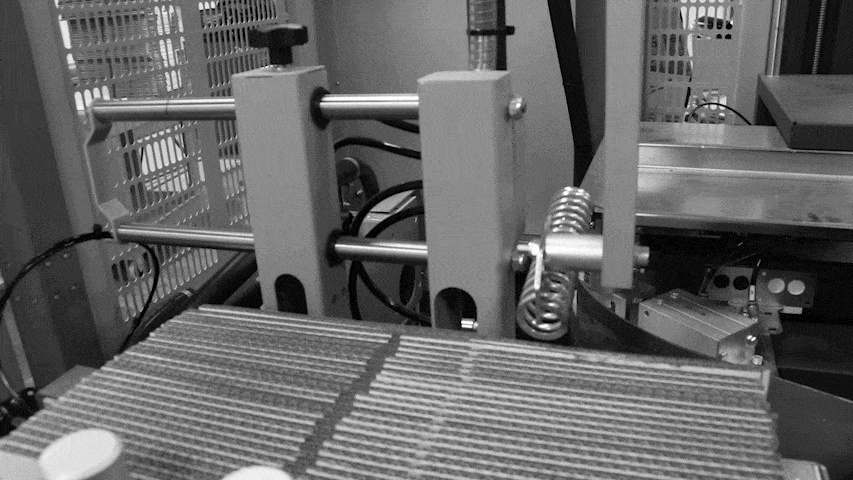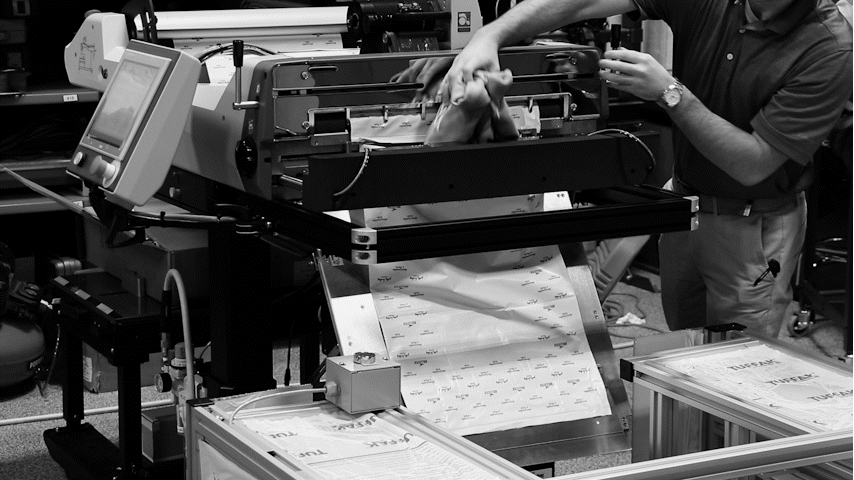We’re moving right along in our 10-part series on useful automation. If you missed our previous posts, you can check them out here:
- Automation Spotlight 1: Case Packing Machines
- Automation Spotlight 2: Case Erectors
- Automation Spotlight 3: Case Sealers
- Automation Spotlight 4: Print and Apply Label Machines
- Automation Spotlight 5: Robotic Palletizers
For Part 6, we’re featuring…
Conveyor Systems
Function:
Conveyor systems are designed to efficiently move products through various stages of production, packaging, warehousing, and distribution. They streamline operations by reducing manual handling and speeding up processes.
Applications:
-
- Packaging Lines: Transporting products through stages of packaging, labeling, and sealing.
- Order Fulfillment: Moving items in a warehouse to assemble orders for shipping.
- Sorting: Automatically sorting products based on size, weight, or destination.
- Inventory Management: Moving products to and from storage areas.
- Retail Distribution: Transporting goods from storage to retail floors.
- Returns Processing: Handling returned items for inspection and restocking.
- E-commerce: Facilitating the rapid movement of items from storage to shipping areas in fulfillment centers.
- Inspection: Conveying products through quality control and inspection stations.
- Cooling and Freezing: Moving products through cooling or freezing tunnels.
- Baking and Cooking: Transporting products through ovens or fryers.
- Distribution: Moving packaged goods to storage areas or shipping docks.
Types:
-
- Belt Conveyors: Commonly used for transporting goods in a straight line or through changes in elevation.
- Roller Conveyors: Ideal for moving products that require accumulation and can handle varied item sizes.
- Slat Conveyors: Suitable for heavy-duty products and assembly line operations.
- Spiral Conveyors: Used for vertical transportation of products in limited spaces.
- Pallet Conveyors: Designed to move heavy pallets of goods in warehouses and distribution centers.
- Sortation Systems: Use different methods (tilt-tray, cross-belt, shoe sorters) to direct products to specific destinations.
- Overhead Conveyors: Used for hanging items like garments, maximizing floor space utilization.
- Modular Plastic Belt Conveyors: Easily cleaned and ideal for food processing applications.
- Wire Mesh Belt Conveyors: Used in high-temperature applications like baking and frying.
- Incline/Decline Conveyors: Used to move products between different elevations.
- Bucket Elevators: Transport bulk materials vertically.
- Vibratory Conveyors: Move products using vibration, ideal for sorting and distributing bulk materials.
- Spiral Conveyors: Used for cooling, freezing, or proofing processes.

Advantages:
-
- Efficiency: Increases the speed and accuracy of product movement, reducing processing time.
- Reduced Labor Costs: Minimizes the need for manual handling, cutting down on labor expenses.
- Consistency: Ensures uniform handling and processing of products.
- Flexibility: Can be adapted to various product types and sizes.
- Space Utilization: Optimizes the use of available space in warehouses and retail environments.
- Error Reduction: Decreases human error in order picking and product handling.
- Scalability: Easily scalable to accommodate growing operations or seasonal demand spikes.
- Hygiene: Can be designed easy-to-clean components to meet stringent sanitary standards.
- Customization: Can be tailored to specific requirements and layouts.
Adaptability:
-
- Modular Components: Can be reconfigured to meet changing needs or new product lines.
- Integration with Technology: Compatible with warehouse management systems (WMS) and enterprise resource planning (ERP) systems for real-time tracking and automation.
- Customization: Can be tailored to specific retail and consumer goods requirements, including size, weight, and packaging type.
- Environmental Adaptability: Designed to function in various environments, including temperature-controlled areas for perishables.
- Handling Diverse Products: Capable of handling a wide range of products, from small electronics to bulk items like furniture.
- Sanitary Design: Features such as easy disassembly, smooth surfaces, and stainless-steel construction to ensure easy cleaning and maintenance.
- Temperature Control: Can be designed to operate in different temperature environments, including refrigerated and heated areas.
- Compliance: Can meet industry standards and regulations for food safety, including HACCP, FDA, and USDA guidelines.
The engineers at Maryland-based Arnold Automation are happy to give you and your team a FREE consultation to assess your needs, then identify and integrate the best automation solutions for your business.
Call Arnold Automation today at 855-276-6537 or submit a quick form and we’ll get right back to you.
Laura Cadden
Arnold Packaging & Arnold Automation
Protecting Your Product and Your Profit








